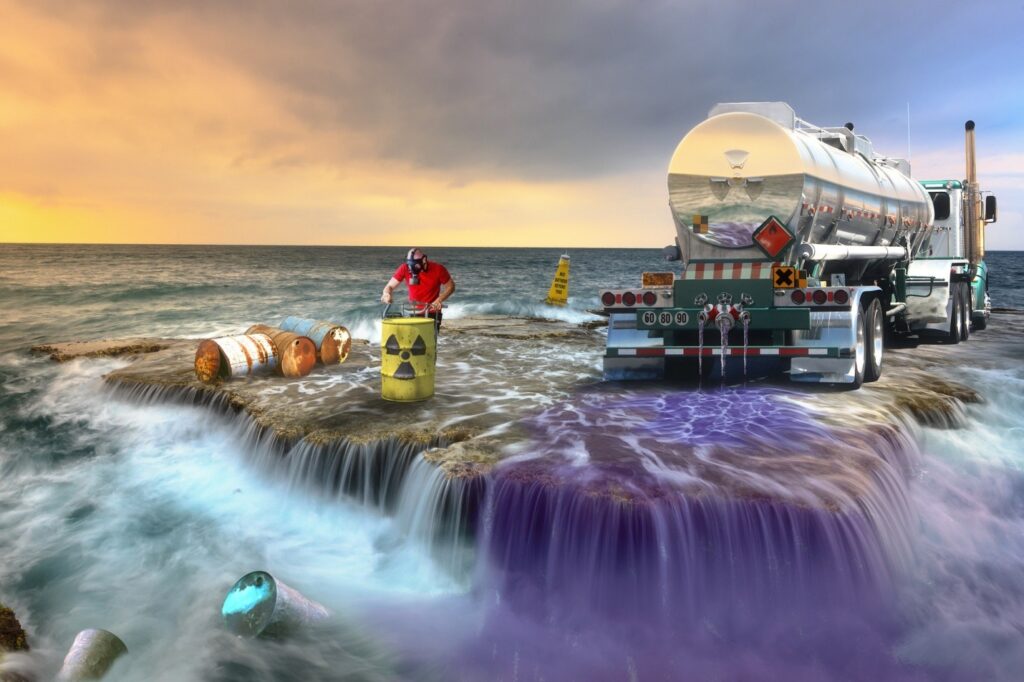Getting The Reclaim Waste To Work
Getting The Reclaim Waste To Work
Blog Article
The 10-Second Trick For Reclaim Waste
Table of ContentsSome Known Factual Statements About Reclaim Waste About Reclaim WasteAll About Reclaim WasteReclaim Waste Things To Know Before You BuyHow Reclaim Waste can Save You Time, Stress, and Money.
Discover the types, occurrences, and kinds of liquid waste. Residential sewer waste describes the waste and items from a property sewage-disposal tank. This kind of waste is created by humans in houses, colleges, and various other buildings. This only consists of sewage-disposal tanks that have a drainpipe area. The proper management and disposal of residential sewage waste call for fluid waste to be transferred to a sewer treatment plant where the correct methods and devices are related to purify and get rid of waste.
Industrial waste typically includes potential hazards, such as combustible materials or a blend of fluid and solid waste products, and needs an advanced and detailed disposal process. The disposal of commercial waste usually includes the filtration of waste before transportation to make certain secure and appropriate disposal. Hazardous waste is created from byproducts and runoff of industrial procedures and production.
This kind of waste can not use the very same sewer monitoring transport or processes as septic or business fluids. The hazardous waste management process calls for the examination and testing of liquid waste before it goes through the disposal procedure (liquid waste disposal). Runoff waste is the liquid waste that originates from overflow and excess stormwater in highly populated areas or cities
Drainage waste can create contamination and flooding if not handled correctly. Find out more concerning sewage system cleaning and waste management. Ensuring proper waste monitoring can protect against catastrophes and reduce environmental harm. Both people in residential settings and specialists in business or production sectors can gain from recognizing the processes and regulations of fluid waste monitoring.
Reclaim Waste Can Be Fun For Anyone
Call PROS Services today to discover about our waste administration and disposal services and the proper ways to look after the fluid waste you generate.
(https://www.tumblr.com/reclaimwaste1/766851148823068673/at-reclaim-waste-were-a-national-solutions?source=share)This supposed 'wastewater' is not just a vital source but, after therapy, will be launched to our land, waterways or the sea. Utilized water from toilets, showers, bathrooms, kitchen sinks, laundries and commercial processes is understood as wastewater.

water used to cool equipment or clean plant and equipment). Stormwater, a type of wastewater, is drainage that flows from farming and metropolitan locations such as roofings, parks, gardens, roadways, paths and rain gutters right into stormwater drains pipes, after rainfall. Stormwater flows without treatment straight to local creeks or rivers, at some point getting to the sea.
Everything about Reclaim Waste
In Queensland, most wastewater is treated at sewage therapy plants. Wastewater is transferred from residential or industrial sites through a system of sewage systems and Resources pump stations, recognized as sewerage reticulation, to a sewer treatment plant.
The Department of Natural Resources suggests city governments about managing, operating and preserving sewerage systems and treatment plants. In unsewered locations, local governments may call for householders to mount individual or household sewer therapy systems to deal with domestic wastewater from bathrooms, kitchen areas, shower rooms and laundries. The Division of Natural Resources authorises the usage of family systems when they are verified to be reliable.
In some new subdivisions, treatment of some stormwater to remove clutter, sand and crushed rock has started using gross contaminant traps. Wastewater treatment takes place in 4 stages: Removes solid matter.
Utilizes little living organisms understands as micro-organisms to break down and get rid of continuing to be liquified wastes and great particles. Micro-organisms and wastes are incorporated in the sludge.
The Best Strategy To Use For Reclaim Waste
Nutrient removal is not offered at all sewage treatment plants due to the fact that it requires expensive specialised equipment. Clear fluid effluent produced after therapy might still have disease-causing micro-organisms - liquid waste removal melbourne.

Many wastewater flows right into the sewage system. Under the Act, neighborhood governments carry out approvals and permits for ecologically appropriate tasks (Ages) including wastewater releases that could have a neighborhood effect.
Not known Details About Reclaim Waste
Surveillance gives valid info about water high quality and can validate that licence conditions are being satisfied. The info acquired with monitoring provides the basis for making water top quality choices.
Report this page